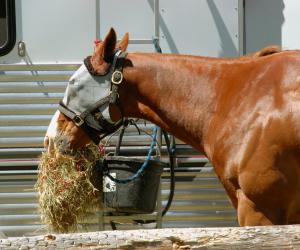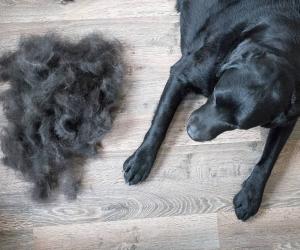12 Common Animal Stereotypes... Debunked!
Fun Facts
- A stereotype is an oversimplified image or belief of a person or thing. Stereotypes come from a place of realism, from social constructs or cultural beliefs.
- Stereotypes can be harmful to the overall breed and species, such as all Pitbulls being aggressive or all sharks being man-eating monsters.
- Some stereotypes are true because of human characteristics we place on animals, such as ants being hard-working animals and the term “mama bear” referring to bears being caring and protective mothers.
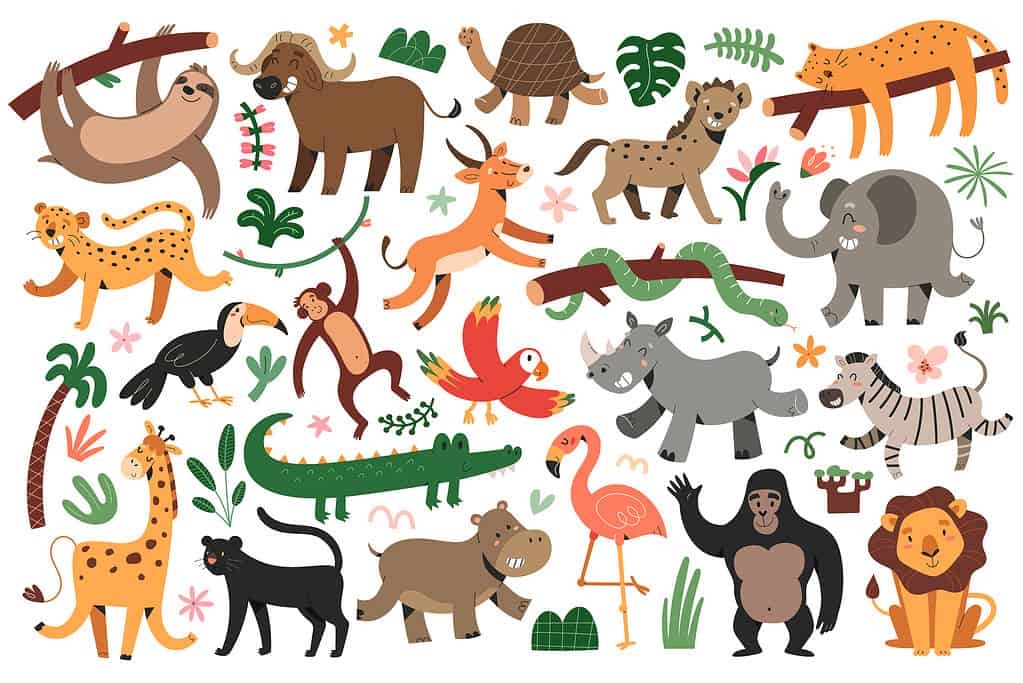
©Ksenia Zvezdina/iStock via Getty Images
Let’s start by saying that stereotyping anyone or anything is not giving enough credit to the individual or object being simplified. Humans and animals are more complex than a single trait, and it is grossly unfair and unethical to presume all animals of the same species or breed will act in the same fashion.
However, stereotypes play a helpful role in creating stories like children’s books. Animals are excellent examples of using stereotypes to convey messages to quickly grasp the characters or learn lessons.
For example, having a “mama bear” in a story immediately makes the reader recognize a caring and supportive motherly figure. On the other hand, seeing a shark fin in the water sends chills down people’s spine thinking all sharks are blood-thirsty, man-eating monsters.
The question becomes, are these animal stereotypes true or false?
Where Do Animal Stereotypes Come From?
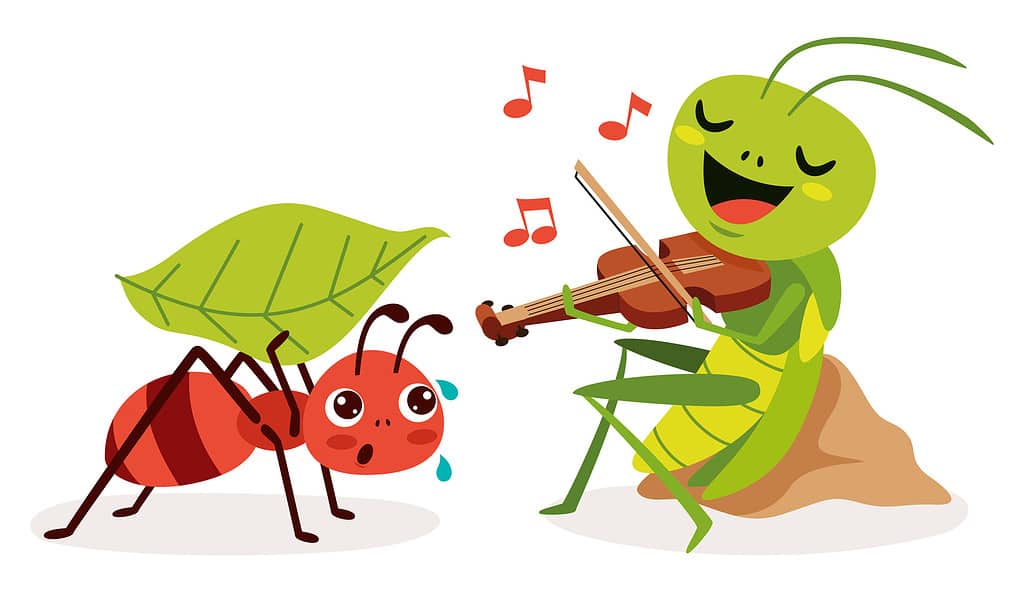
©eliflamra/iStock via Getty Images
Humans have several methods to stereotype animals. These methods come from a place of misinformation, mass media, fear, cultural belief, and upbringing.
Anthropomorphism
Humans and animals have been living together for thousands of years. Throughout that time, humans will put emotions or human-like qualities to animals, making them more appealing and understandable. Several stories incorporate anthropomorphism, which is attributing human characteristics or behaviors to animals. Suddenly, a regular ant is now a “hard-working” ant, or a hunting fox is now a “clever fox.”
Stories
Additionally, mythology and folklore tell stories of humans and animals interacting often. These stories revel in brave heroes slaying monsters that are more powerful versions of regular animals. Mutant animals like dragons, werewolves, and sea monsters, become part of human consciousness that the images in the story are believed to be true.
Popular fairy tales love having humans interact with magical animals by giving them human traits. It adds tension to the story to have a “big bad” wolf or “a Kraken” replace an ordinary animal.
Collective Unconscious
The collective unconscious is a psychological term referring to the mind containing memories and impulses of what they are not fully aware, but common to mankind. For example, many people are afraid of the dark for no inexplicable reason. There is no need to be afraid of the dark anymore, but humans are still afraid because our great ancestors were afraid. That fear is still deep in the subconscious of the mind and manifests itself without a clear explanation.
Fear of certain animals applies the same way to avoid snakes, spiders, and other foreign animals deemed “scary.” Wild animals want to be left alone. For instance, snakes hiss to inform larger predators (like humans) that they are too close and to leave them alone.
Animal Stereotypes: True or False
Time for the fun game of determining if these common animal stereotypes and myths are actually true or a piece of fiction and fantasy.
Cats and Dogs Are Natural Enemies

©Masquad/Shutterstock.com
Answer: Both
Sorry, this is a partially trick question. This specific situation depends on the individual animals in general and their environment. In the wild, all animals learn to live together in a begrudging level of peace and tolerance or as a predator-prey relationship. Some for relationships that benefit each other while others only benefit the one.
Cats and dogs raised together will become as close as siblings. Dogs may adopt cat behaviors like grooming themselves while cats may adopt dog behaviors like play fighting or wanting to go for walks. However, when not raised together, than it is likely that cats will be defensive toward dogs. Small dogs may not mind cats because they are of equivalent size, but hunting dogs may have more issues by seeing them as prey or a rival predator.
The idea of cats and dogs being bitter rivals because big dogs will chase small prey like cats. However, cats are extremely fast and are prone to scaring dogs after slashing them on their sensitive nose. Also, humans embellish the rivalry because avid dog and cat lovers will boast their animal is superior to the other.
“Graceful as a gazelle”
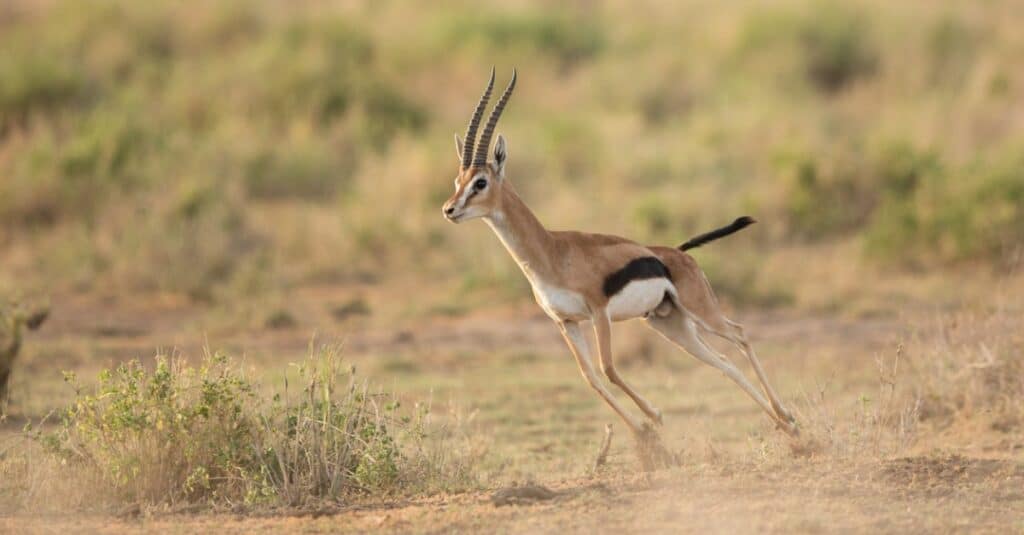
©iStock.com/StuPorts
Answer: True
Gazelles are actually very graceful in the wild. They are small, deer-like mammals with long, curved horns and live in and Asia. They are exceptionally fast, capable of reaching top speeds of 60 mph. Their long legs and slender bodies allow them to nimbly traverse grasslands to avoid predators like lions, hyenas, jaguars, and crocodiles. Light on their toes, they leap and bound across the savannah in a word that humans can only describe as “graceful.”
Gazelles are like nature’s ballet dancers, they both have long legs and the ability to quickly leap high into the hair with what appears like minimal effort. Also, gazelle can effortlessly move on the uneven terrain of the savannah while humans struggle with their footing, highlighting the grace and balance a gazelle has for their thin legs.
“Bats will suck your blood”
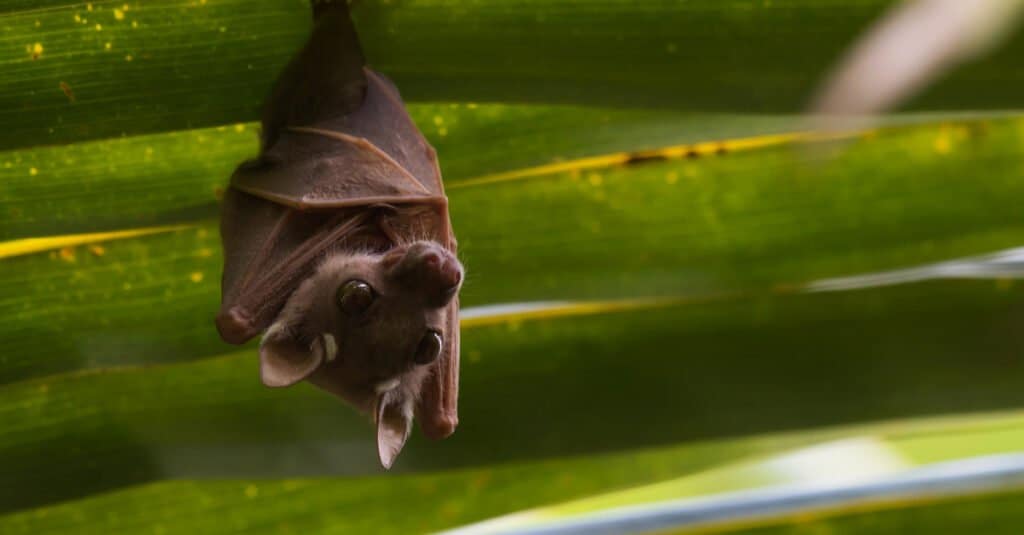
©Dave Montreuil/Shutterstock.com
Answer: False (mostly)
Another ambiguous answer, but the majority of bats do not suck blood. Most bats are insectivores, feasting primarily on insects. Larger bats like the fruit bats need nectar, sap, and juices from fruits and leaves to sustain themselves. The majority of bats do not suck blood and have no interest in feeding on humans.
However, will suck the blood from large mammals like cows. But vampire bats are two to three inches tall and weigh nearly two ounces. They are minuscule creatures that can barely kill a large dog, never mind a human by draining the blood from their body.
Fictional stories involving vampires like “Dracula” illustrate the villains turning into bats and draining blood from their victims. These stories of vampires became so popular and widespread that bats are synonymous with blood-sucking even though it is mostly untrue.
“Mama bears”
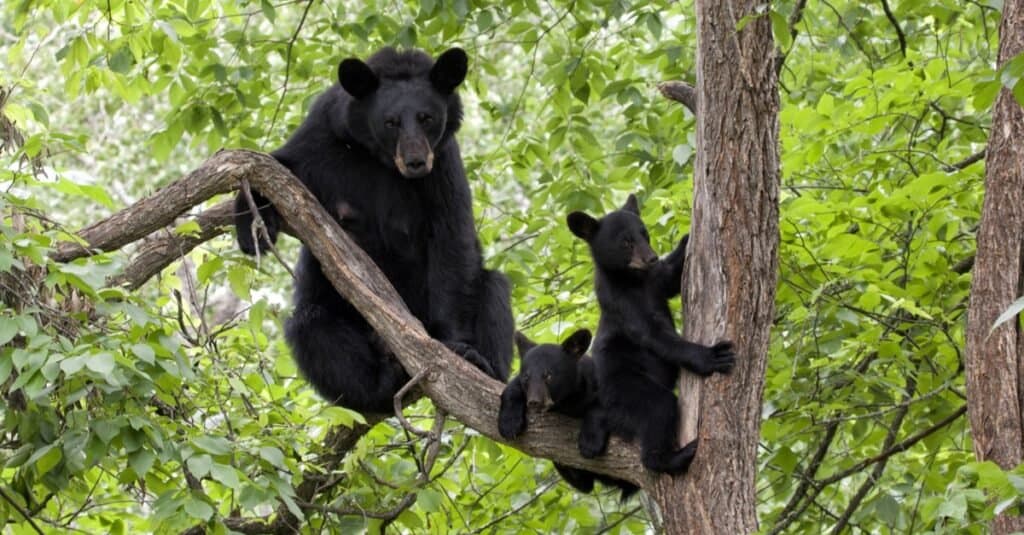
©Debbie Steinhausser/Shutterstock.com
Answer: True
Everyone knows the image that bears are caring, loving, and protective mothers. Being a mama bear is often a term of endearment to highlight a mother’s skill and ferocity in protecting her children. Mothers use it to describe themselves to warn other mothers not to harm their children.
In the wild, bears are generally solitary and isolated animals. They forage and hunt for food, sleep often, and wrestle with other bears to mark territory or mating rites. Black bear mothers will watch over their cubs for 17 months before parting ways, allowing them to forage on their own. mothers watch their cubs for nearly two years before separating from their mother and exploring the world on their own.
The time the mother bears spend with their kids is an excellent example of a loving mother, protecting her young from other predators. Mother bears will attack anything that comes near her cubs, even if they are not a threat to make sure no harm comes to them.
Bulls are clumsy and hate red
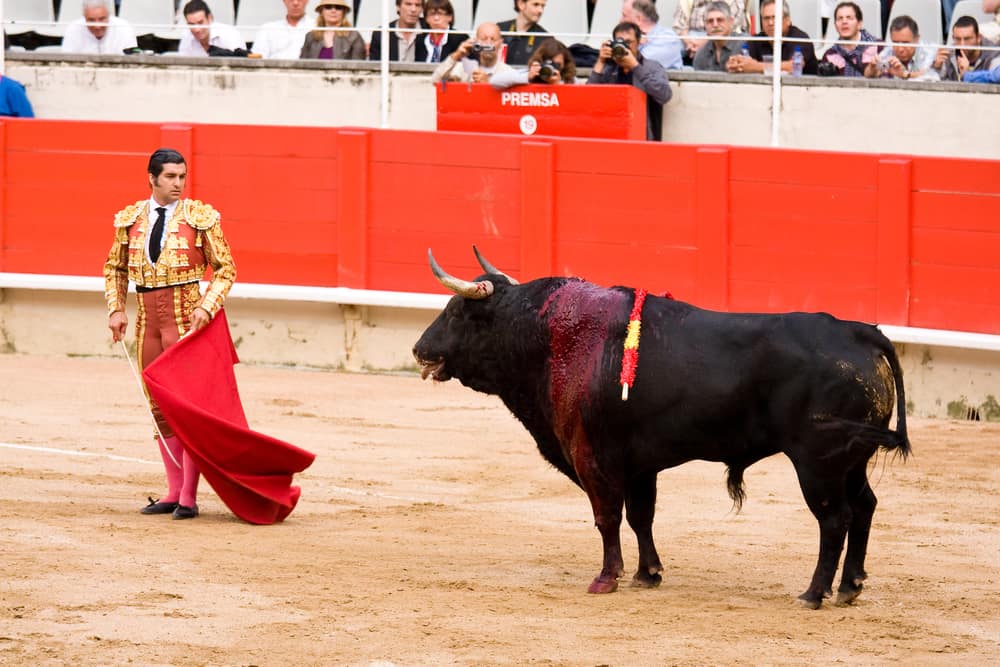
©Natursports/Shutterstock.com
Answer: FALSE (both)
Surprise, bulls are not hyper-aggressive animals and can be very graceful when walking around delicate glassware. The television show “” disproved the myth by placing several bulls in a pen full of fine china, and the bulls effortlessly walked around it all.
Additionally, bulls cannot properly see the color red and have no preference for charging at it.
Bullfights are the reason for the stigma against bulls. Bullfighting events have bulls as a main attraction for a human to slay in an arena. Spanish fighting bulls are heavily drugged before entering the arena, increasing their senses and aggression. Matadors provoke the bulls into charging, eventually exhausting them enough to land a killing blow.
Bullfights are seen as a form of animal cruelty and have negatively affected the bull’s reputation for being beasts of rage and destruction when they can be as gentle as cows and other farm animals when given love and respect.
“Black cats bring bad luck”

©Viktor Sergeevich/Shutterstock.com
Answer: False
Black cats have a history of stigma that is criminally unfair. They are wonderful animals and no different from any other cat aside from having a dark coat. There are why a family would be grateful to own a black cat, but many families avoid adopting black cats because of their fictitious reputation.
The origin of black cats being unlucky came from superstitions and color theory that black was the color of evil and darkness. Religious beliefs saw black as the absence of all light and goodness, and any animal having a black coat was a living representation of the darkness or evil nature. For example, hellhounds are religious beasts that look like tall all-black dogs.
On the contrary, many cultures like Japan and Ireland believe that a black cat will bring good luck and health. Ancient Egypt had murals and walls highlighting a cat’s connection to divine beings and bringing blessings to the family housing them.
Pit bulls are aggressive and bad dogs

©Cheryl Ann Studio/Shutterstock.com
Answer: False
are one of the biggest causes of misrepresentation in pet care. When imagining an aggressive guard dog, one of the most common breeds to imagine would be a pit bull. Their bad reputation for being an aggressive breed leads to discrimination where landlords will refuse owners space if they own a Pitbull or other “large breed dog.” People will walk to the other side of the street if they see someone taking their Pitbull for a routine walk on a leash.
Unfortunately, pit bulls have a long history of fighting dogs for gambling and sporting events. They were prized fighters and capable of winning their owners large sums of money by killing the competition. They would even work with owners to fight against bulls.
Despite their history of violence, pit bulls are “nanny dogs” because they are excellent with children. There are many pit bull advocacy groups online trying to change the stigma on pit bull aggression because the breed itself is not dangerous. Human owners trained their dogs to be aggressive so that the image of a pit bull being aggressive is now cemented in the collective unconscious.
Pit bulls are just like any other dog. When given proper time, care, attention, and training, they are excellent companion animals.
Sharks are killing-machines
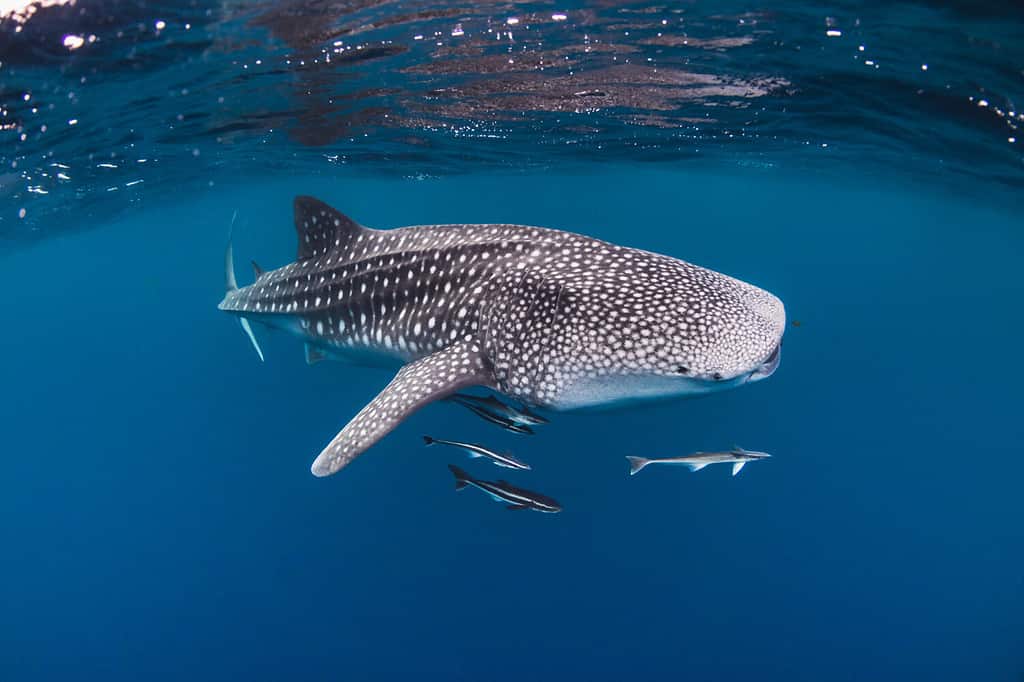
©Aaronejbull87/Shutterstock.com
Answer: Sort of
Sharks have a complicated relationship with people. They evolved to be the perfect killing machines in the water to hunt specific prey like fish, seals, and small marine animals. Evolution streamlined their bodies to move faster, sense farther, and camouflage themselves to be nearly undetectable to the naked eye. In this definition, sharks are natural-born hunters and killers of sea life.
However, humans are not an option for sharks. The majority of shark attacks are accidents. Sharks mistake a surfer or swimmer for a flailing fish or swimming seal, and instinctually attack it thinking it is food. Sharks use their sharp senses to find prey and use their mouths to investigate what they find because they have no hands. Once they find out it is not what they expected, they spit the human out and swim away. Imagine, you are about to eat a delicious steak. Right before you take a bite, the steak turns into a soggy stick.
That being said, and have no qualms about eating anything they can fit their mouth on. Whenever a fatal shark attack is reported on the news, chances are it is one of these two culprits because they will eat anything. sharks will eat trash like cans, boots, and license plates lying on the seafloor. Bull sharks can swim in freshwater and will attack anything that comes into their vicinity.
Alternatively, some sharks like the , , and are said to be the friendliest sharks to swim with. They have no desire to attack or eat humans, they see people as just another large species to cohabitate with. That does not make them good pets though.
Remember, sharks do not want to eat humans. But two may try to.
Lions are kings of the jungle
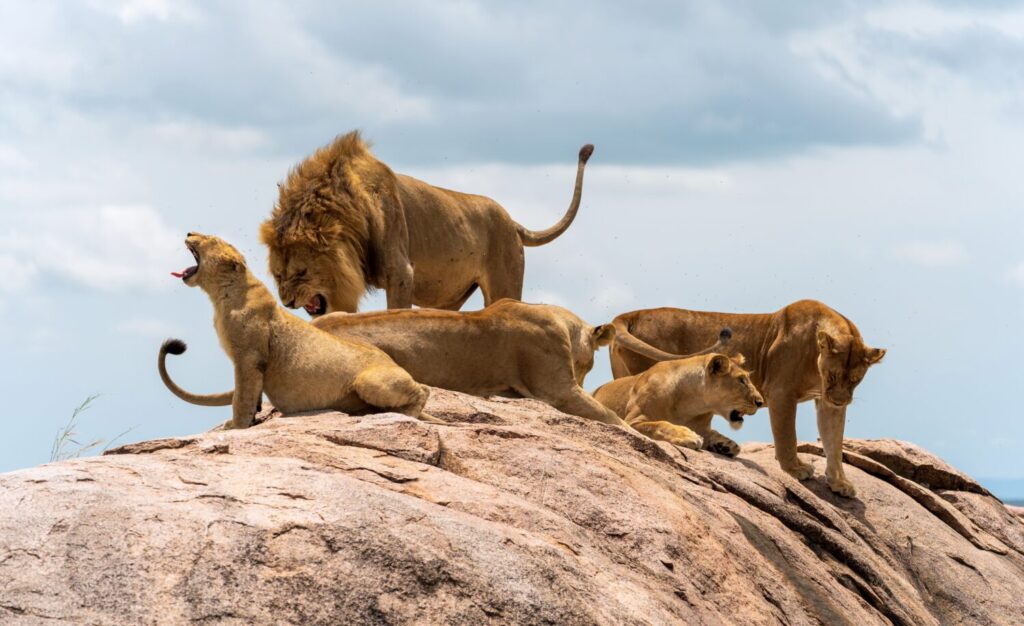
©Howard Darby/Shutterstock.com
Answer: True
Fun fact, lions do not technically live in the jungle. Lions live in desert and savannah regions. Still, the term king of the jungle is catchier than the other biomes and feels more ominous for retellings.
Lions are given the moniker of king, because of how they act. These big cats are apex predators, having no natural enemies while other predators flee when they are on the prowl. Male lions act like royalty by having a group of lionesses hunting for him while he laze about without any care in the world. The fact a predator is capable of lounging in the open without fear of a predator shows they have no fear and are at the top of their food chain.
Also, manes are so fancy and luscious that humans attributed it to a crown.
Snakes are slimy and evil

©Crok Photography/Shutterstock.com
Answer: False
Snakes are one of those animals that get the short of the stick when it comes to fantasy roles in stories. Because of their unique bodies, snakes act as sneaky villains in stories despite real-world snakes desire little more than to eat and sunbathe.
People believe snakes to be slimy because of the way their scales shine in the sunlight, making it appear they are covered in a fine gloss. Snakes have a natural sheen to their scales which allows them to blend into their environment and as a warning to ward off predators.
Religious beliefs, collective unconscious fear, misinformation, and horror movies paint snakes (as well as sharks and big dogs) with the same broad stroke of being dangerous and evil animals because they are different.
Understandably, every story needs a villain or antagonist to provide a sense of conflict or obstacle for the heroes to overcome. Snakes can be dangerous, especially venomous snakes when one gets too close, but they are not evil. They will not actively seek out people to kill or commit atrocities for personal greed. They want to live their life like any other animal, eat, sleep, mate, and lie back in the sun to relax.
“An elephant never forgets”
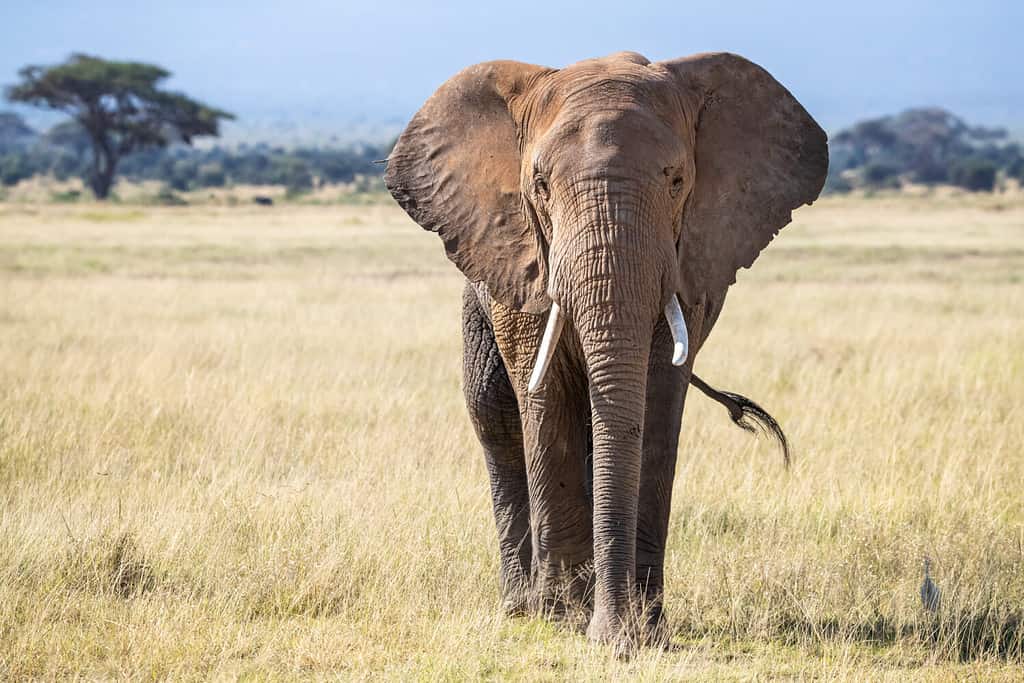
©Jane Rix/Shutterstock.com
Answer: True
Elephants are one of the largest land mammals on the planet. They are said to be intelligent, thoughtful, and capable of never forgetting anything spoken to them. Stories will emphasize this literally with elephants knowing everything and being wise sages, or played with comedic irony where an elephant cannot remember anything told to it.
In real life, elephants have amazing memories and can recall information or commands from many years ago. Videos online highlight elephants who have been set free and after years of living with a herd, still remember the trainers they formed close bonds with in .
Alternatively, news stories also highlight elephants seeking revenge on people who hurt them. In 2022, a by an elephant that actively sought her out. During her funeral, the elephant returned to attack the dead body, showcasing it was holding a grudge.
Make it a lesson, never cross an elephant, because they will remember what you did.
“Lazy as a sloth”
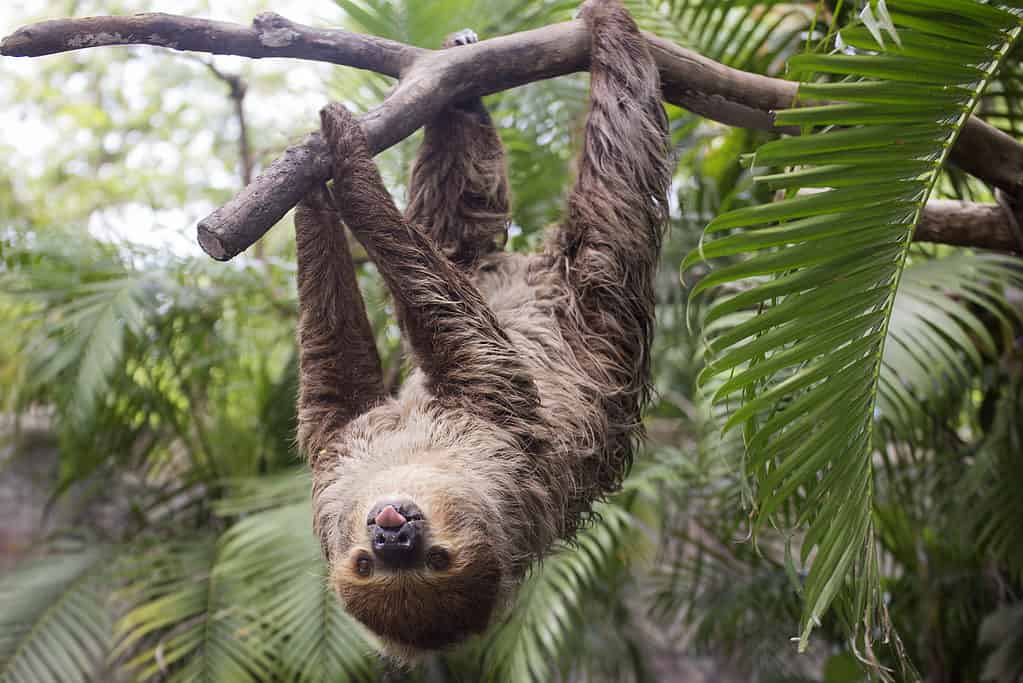
©iStock.com/Kung_Mangkorn
Answer: False
Finally, we come to our last animal stereotype regarding sloths and their supposed laziness. In actuality, sloths are very productive animals, they just move extremely slowly.
Modern American culture prides itself on how busy and efficient someone is. The more work they accomplish, the more credit they get for being a “good worker.” In turn, someone who moves slowly and gets little done is seen as a poor employee and may leave them feeling out of place in “hustle culture.”
Sloths are not humans, they move so slowly that algae forms on their fur because they cannot clean themselves fast enough. Their slow pace does not make them lazy. Sloths are born with a slow metabolism, requiring them to move at slower speeds to conserve energy. They physically cannot move quickly and move within their own timeline.
There is nothing wrong with moving slower than others around you, especially if your biology does not afford you the capacity to function that way. Sloths provide shelter to dozens of small animals living in their fur that they are perfectly happy being the slowest animals on earth.
For more evidence, laziness is defined as being unwilling to do work or use energy. Sloths are not unwilling to use energy, they are incapable.
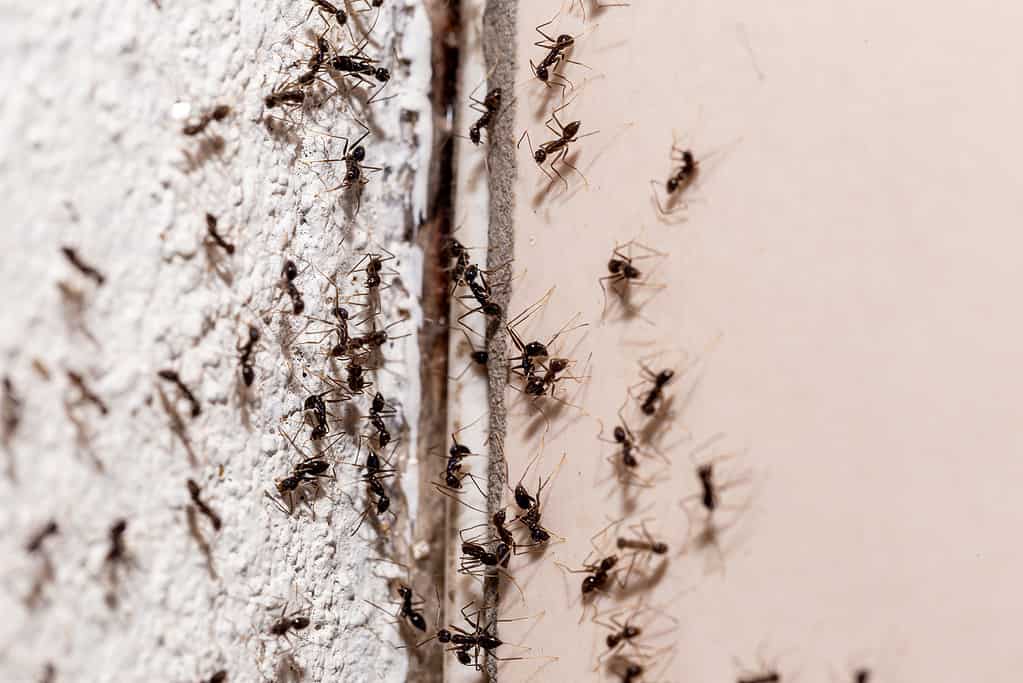
©RHJ/iStock via Getty Images
These are a small sample of animal stereotypes in nature. This article is to help explain that animals are more than just common beliefs and old stories. Next time an animal stereotype is brought up, take a moment to see if that description is true or false and share the information with others to change the stigma on negative stereotypes.

